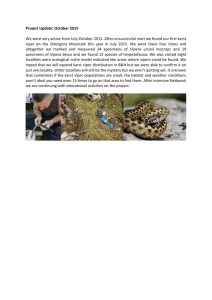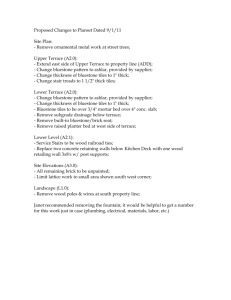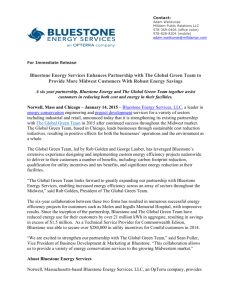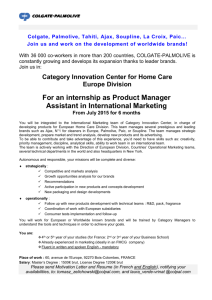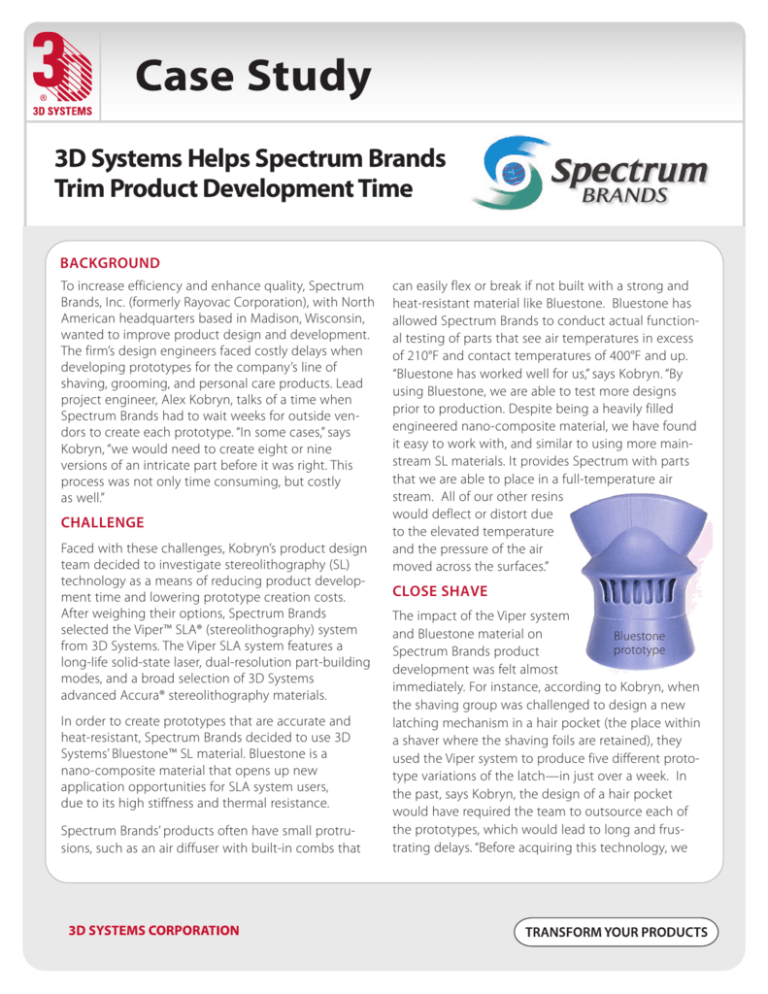
Case Study
3D Systems Helps Spectrum Brands
Trim Product Development Time
BACKGROUND
To increase efficiency and enhance quality, Spectrum
Brands, Inc. (formerly Rayovac Corporation), with North
American headquarters based in Madison, Wisconsin,
wanted to improve product design and development.
The firm’s design engineers faced costly delays when
developing prototypes for the company’s line of
shaving, grooming, and personal care products. Lead
project engineer, Alex Kobryn, talks of a time when
Spectrum Brands had to wait weeks for outside vendors to create each prototype. “In some cases,” says
Kobryn, “we would need to create eight or nine
versions of an intricate part before it was right. This
process was not only time consuming, but costly
as well.”
CHALLENGE
Faced with these challenges, Kobryn’s product design
team decided to investigate stereolithography (SL)
technology as a means of reducing product development time and lowering prototype creation costs.
After weighing their options, Spectrum Brands
selected the Viper™ SLA® (stereolithography) system
from 3D Systems. The Viper SLA system features a
long-life solid-state laser, dual-resolution part-building
modes, and a broad selection of 3D Systems
advanced Accura® stereolithography materials.
In order to create prototypes that are accurate and
heat-resistant, Spectrum Brands decided to use 3D
Systems’ Bluestone™ SL material. Bluestone is a
nano-composite material that opens up new
application opportunities for SLA system users,
due to its high stiffness and thermal resistance.
Spectrum Brands’ products often have small protrusions, such as an air diffuser with built-in combs that
can easily flex or break if not built with a strong and
heat-resistant material like Bluestone. Bluestone has
allowed Spectrum Brands to conduct actual functional testing of parts that see air temperatures in excess
of 210°F and contact temperatures of 400°F and up.
“Bluestone has worked well for us,” says Kobryn. “By
using Bluestone, we are able to test more designs
prior to production. Despite being a heavily filled
engineered nano-composite material, we have found
it easy to work with, and similar to using more mainstream SL materials. It provides Spectrum with parts
that we are able to place in a full-temperature air
stream. All of our other resins
would deflect or distort due
to the elevated temperature
and the pressure of the air
moved across the surfaces.”
CLOSE SHAVE
The impact of the Viper system
and Bluestone material on
Bluestone
prototype
Spectrum Brands product
development was felt almost
immediately. For instance, according to Kobryn, when
the shaving group was challenged to design a new
latching mechanism in a hair pocket (the place within
a shaver where the shaving foils are retained), they
used the Viper system to produce five different prototype variations of the latch—in just over a week. In
the past, says Kobryn, the design of a hair pocket
would have required the team to outsource each of
the prototypes, which would lead to long and frustrating delays. “Before acquiring this technology, we
Case Study (cont'd)
3D Systems Helps Spectrum Brands Trim Product Development Time
faced some difficult issues when working through
part revisions with suppliers,” say Kobryn. “ The tedious
process could span three or more weeks during
which time we had to explain our changes, rework
CAD drawings, and often rework the prototype
multiple times. Plus, we faced inevitable delays due
to miscommunication and shipping.”
Instead of outsourcing or creating special tooling
in-house, Spectrum Brands is now able to conveniently produce a working functional prototype and
solve their design problems in half the time using
the Viper system. “It is now very easy for us to create
a model and then quickly make small changes to it,”
says Kobryn.
SMOOTH FINISH
Time isn’t the only thing
Spectrum Brands is saving
by using the Viper system with
Bluestone material. Recently,
when designing a gasket, the
company avoided significant
Bluestone
costs that would have been
air diffuser
incurred without the SLA system by
doing high-temperature functional testing with the Bluestone parts prior to tooling. “Our old
method would have required us to create a $5,000
tool, and it would have taken six weeks to build it,”
says Kobryn. “Plus, any changes to the gasket design
would have required a $500 to $700 change to the
tooling. With the Viper system, we can make a gasket
prototype in just two hours. If we want to make a
small change, we update our CAD drawing and the
new part is done in a few hours. From a cost savings
standpoint, it’s phenomenal.”
Product quality is also enhanced through the rapid
prototyping process. “The Viper system brings the
designer closer to their final design goal,” Kobryn
explains. “We can even add functionality to the part.
For example, instead of machining the buttons on
one of our products as we would have done in the
past, we simply made revisions to the product’s CAD
3D Systems Corporation
26081 Avenue Hall
Valencia, CA 91355 U.S.A.
data and used Bluestone to create a working prototype. We made five or six revisions to the prototype
before we ultimately developed buttons with the
functionality we were seeking.”
Kobryn has also seen a marked improvement in internal and external communications since they installed
their Viper system. Today, when new products are
designed, 3-D prototypes and fully functioning
models can be presented to internal groups, such as
sales and marketing, as well as to outside vendors.
“They can see the internal workings of a product and
get a feel for how it works,” says Kobryn.
In the past, according to Kobryn, engineers would
huddle around a computer screen to view a product
design. They might try, for instance, to determine
where to put a handle on the product. “There would
be some general agreement about where to place a
handle,” says Kobryn, “but no one could be sure how it
would feel in the user’s hand. With our Viper system,
we can make a prototype that has the same weight
and feel as the real thing. We can then send the
finished prototype off to manufacturing, and they can
see how everything fits together. These capabilities
have greatly improved communications internally and
with outside suppliers.”
Today, the Viper system is used by divisions
throughout Spectrum Brands. According to Kobryn,
the company is building as many as three different
prototype parts per day with the Viper system. The
company uses the machine nearly every night and
most weekends to build complex parts, which might
require as many as 30 hours of machine time. In the
first six months alone, Spectrum Brands ran their Viper
system more than 2,000 hours.
With the success of the first machine, Spectrum is
considering adding a second Viper SLA system in the
future. “This is an excellent technology,” says Kobryn.
“It has provided us with a good balance between
resolution and material quality. We may add another
Viper system to further expand the use of this critical
technology at Spectrum Brands.”
661.295.5600, ext. 2882
Toll-free: 888.337.9786
Fax: 661.294.8406
moreinfo@3dsystems.com
www.3dsystems.com
Nasdaq: TDSC
Warranty/Disclaimer: The performance characteristics of these products may vary according to product application, operating conditions, material combined with, or with end use. 3D Systems makes no warranties of
any type, express or implied, including, but not limited to, the warranties of merchantability or fitness for a particular use.
Transform Your Products
© 2006 by 3D Systems, Inc. All rights reserved. Specifications subject to change without notice. Viper and Bluestone are trademarks and the 3D logo, SLA, and Accura are registered trademarks of 3D Systems, Inc.
PN 70701 Issue Date 17 Jan 06

